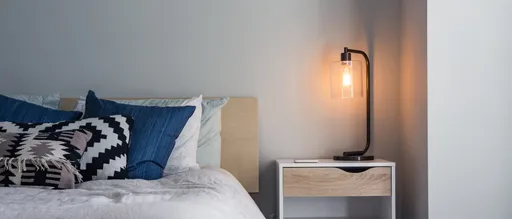“I think a nap in the afternoon is fine as long as it does not affect your ability to sleep at night. You might also want to check with your boss to make sure the nap is okay.” ~ Dr. Chris Winter, The Sleep Solution
Key Points
- Napping isn’t inherently bad, but napping too long can be detrimental to quality sleep.
- Our homeostatic and circadian rhythms play a major role in how we feel throughout the day.
- What you can do to help make napping a powerful tool.
Many of us have fond memories, or at least remember the stories told to us, about taking naps when we were younger. Most daycare centers and Montessori schools had afternoon nap time built into the schedule and provided cots or mats for the children to rest on. At what age did napping become a bad thing? As many parents can attest, children often grow out of the napping phase much faster than the parents would like them to. This desire for a midafternoon slumber does return at some point, usually in our late teens or early twenties (around the age many young people are in college). As adults, naps become taboo and stay that way until we’re so old we can barely make it through an afternoon awake. Should we be napping regularly as adults, but we’re just too busy? Should we be able to power through each day and ignore the sleepiness we feel shortly after lunch time? Should we be concerned if we feel tired in the afternoon? The best place to start with answering these questions is understanding two systems inside of all humans; namely, the homeostatic and circadian systems.
Homeostatic & Circadian Systems
The homeostatic and circadian systems help regulate our need to rest and recharge (sleep). Homeostasis refers to bringing balance to a system. For the point of this discussion, the balance is between being awake/active and being asleep/at rest. The circadian rhythm acts as a clock to help the body maintain optimal homeostasis.
Three Phases of Circadian Rhythms
Recent research on the flow of circadian rhythms indicates that there seems to be three distinct phases. The first phase begins upon waking up. This phase can last anywhere between 6-9 hours. Researchers believe this phase may be our best time to do deep thinking, critical problem solving, to experience extended concentration and utilize memory recall. The second phase begins as the first is beginning to wane. This transition is often marked by a physiological reaction when the body needs rest (along with a reduction in mental fortitude). We will revisit this phase for the purpose of this article. The final or third phase begins as the sun goes down and we ready ourselves for sleep. If we allow for our bodies to dictate our daily schedule more than technology, work or other indulgences (late night eating, binge watching videos, streaming shows, etc.), we will likely begin to get tired and sleepy at the end of another 6–9-hour cycle and enter phase three of this circadian cycle.
The Second Phase of our Circadian Rhythm
Let’s revisit the second phase of our circadian rhythm. According to researchers, it is in this phase that we increase our ability to do more creative thinking, along with completing trivial tasks or busy work. In the transition from phase one to phase two, there seems to be a consistent drain on our physiological and mental resources. In cultures within the U.S. (and more broadly in cultures throughout the world), this transition is when people will often take a short nap. In America, we tend to fight this urge by consuming more caffeine, sugary snacks or a combination of the two. In his book, Why We Sleep, Dr. Matthew Walker discusses the usefulness of napping, while cautioning that what constitutes a nap isn’t always what people are truly engaging in. Closing your eyes and resting for 15-20 minutes can have tremendous benefits for reinvigorating both our mental and physical states of being. Dr. Andrew Huberman, a neuroscientist and ophthalmologist at Stanford University, uses a term – non-sleep deep rest (NSDR) – to describe his practice of recharging in between the circadian rhythms of his day. NSDR may look like napping, but it is actually a time when one focuses on breathwork and/or meditation for 15-20 minutes. The ruinous side of napping is when we don’t measure it and we allow ourselves to rest too deeply for too long. This can disrupt our circadian rhythm to the point that when evening light begins to fade, our bodies aren’t ready to wind down. We also need to be mindful of other behaviors that can cause disruption in our homeostasis. There are many, but some of the more common are not getting enough sleep at night, too much caffeine or other substances that interfere with the production of adenosine, too much stress (physically, mentally, emotionally), and not enough movement (the good kind of stress).
Conclusion
Ideally, each of us should prioritize sleep so that most nights we are getting enough quality and quantity that we don’t need to nap during the day. Naps would be an exception, saved for vacations or as a boost for those days when we are exceeding our normal physical and mental output. Think of naps the way you think of eating ice cream – if you do it occasionally, it’s a treat. If you do it all the time, it’s part of your diet.



 8min to read
8min to read
 18min to read
18min to read
 9min to read
9min to read